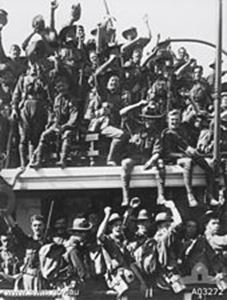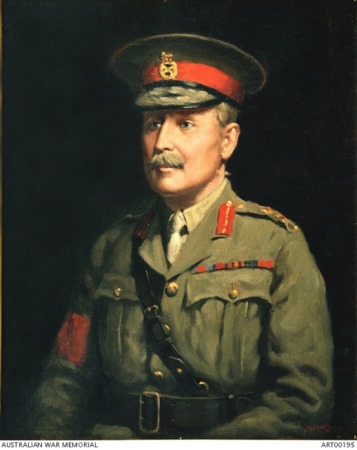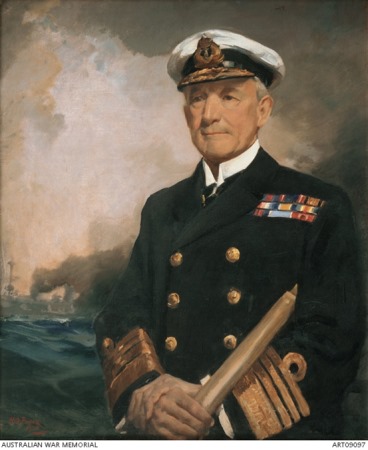The Battle of Bitapaka
Formation and embarcation of ANMEF
The loss of submarine AE1 in 1914
|
At the request of Britain, Australia quickly marshalled a military force for an assault on German possessions in the Pacific. The Australian Naval and Military Expeditionary Force (ANMEF) was formed on 6 August 1914, 2 days after the declaration of war between Britain and Germany. The AN&MEF comprised one battalion of infantry of 1,000 men enlisted in Sydney—known as the 1st Battalion, ANMEF—plus 500 naval reservists and ex-sailors who would serve as infantry. Another battalion militia from the Queensland based Kennedy Regiment, which had been hurriedly dispatched to garrison Thursday Island, also contributed 500 volunteers to the force. The objectives of the force were the German stations at Yap in the Caroline Islands, Nauru and at Rabaul, New Britain. Under the command of Colonel William Holmes the ANMEF departed Sydney aboard HMAS Berrima embarking at Cockatoo Island in Sydney Harbour; and halted at Palm Island off Townsville until the New Zealand force, escorted by the battlecruiser and flagship of the Australian Navy, HMAS Australia, cruiser HMAS Melbourne. The ANMEF then moved to Port Moresby where it met the Queensland contingent aboard the transport TSS Kanowna. The force then sailed for German New Guinea on 7 September.
The ANMEF assault group approaching New Britain comprised the battlecruiser HMAS Australia, the light cruiser HMAS Sydney, destroyers HMAS Encounter and Warrego and a submarine AE1. It seems from some accounts that destroyer HMAS Yarra also joined the squadron at some point. In command of the naval fleet was Admiral Patey: accounts of the engagements, up to the present day, suggest there may have been some tensions between the respective naval and Army commands.
|


